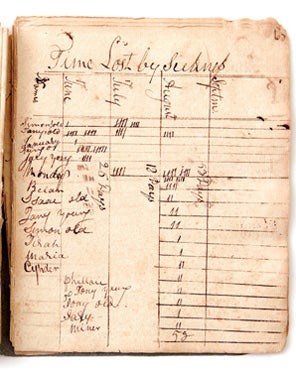When you’re in the business of collecting, you’re eventually going to run out of room – especially when you’ve been at it as long as the South Carolina Historical Society has.
Established in 1855 with the mission of expanding, preserving and making accessible its collection of books, letters, journals, maps, drawings and photographs about South Carolina history, the SCHS is home of the state’s oldest and largest private collection, and it is constantly adding materials to its collection.
And herein lies the problem.
Housed in the Fireproof Building, a National Historic Landmark on Meeting Street, the SCHS has been so good at accomplishing the expanding aspect of its mission, the preserving and making accessible components have become jeopardized in recent years.
“It had gotten to the point in the Fireproof Building that every corner was taken with something. That makes it hard to display and guard against moisture and other elements – and it also makes it hard to fulfill the goal of exposing the collection to the greatest degree possible to the general public,” says Dan Ravenel ’72, who serves both on the College’s Board of Trustees and as the third vice president for the SCHS.
Enter the College of Charleston, whose Marlene and Nathan Addlestone Library is built for expansion and offers all the right elements to further the SCHS’s goals.
“Moving the collection to the College’s library was a fairly easy decision to make,” says Ravenel, noting that the facility not only could easily accommodate such a collection, but also could provide both a secure, temperature-controlled environment for preserving the materials and a built-in team of professional archivists to oversee them. “It was made even more attractive because of the flow of people that would be exposed to the collection. So, the College sort of won the day.”
Truth is, the College won more than just the day.
“This collection is a treasure of material. It makes our library a much stronger repository of research materials, bringing in first-class historians, researchers and writers, as well as providing a unique and vast amount of material for the historical studies of students and faculty members,” says Steve Osborne ’73, executive vice president of business affairs at the College. “It’s an absolute win- win: It showcases the historical society’s collection better and, for us, it provides for more in-depth research.”
“For historians and social scientists who come to the library, this gives them far better access to information – and to different information, different kinds of information,” agrees David Cohen, dean of the School of Languages, Cultures, and World Affairs, who, as the former dean of the library, played an integral role in bringing the SCHS collection to campus. “It’s a combination of physically integrating the collections and integrating access to material. It’s also an integration of expertise. Bringing the expertise of archivists together gives your research more perspective. It just adds more dimension to the research.”
But first, the College is going about adding dimension to the Addlestone Library. Beginning in early 2014, renovations will outfit the second floor with compact shelving, freeing up space for the third-floor holdings, which will move down a story to accommodate the SCHS collection on the third floor.
The renovations – which will also create additional student seating and some multipurpose classroom space – are expected to be done within a year, and the collection and a few SCHS staff members will move to the Addlestone shortly thereafter. (The majority of the SCHS staff, however, will remain in the Fireproof Building, which will become exhibition space for the society.)
When it’s all said and done, the Addlestone Library will rank with the top research centers in the nation in Southern studies.
“Truthfully, we will have the best collection of South Carolina history to be found in the world,” says Cohen, noting that the collection includes letters written by George Washington and Thomas Jefferson, as well as a wealth of material documenting slave trade in the state. “It’s really a great advantage to the College and to our larger community.”
And, of course, to the historical society – which gains not only physical space, but also access to the College’s digitization initiatives, thus giving it license to collect whatever it wants – without ever running out of room.





